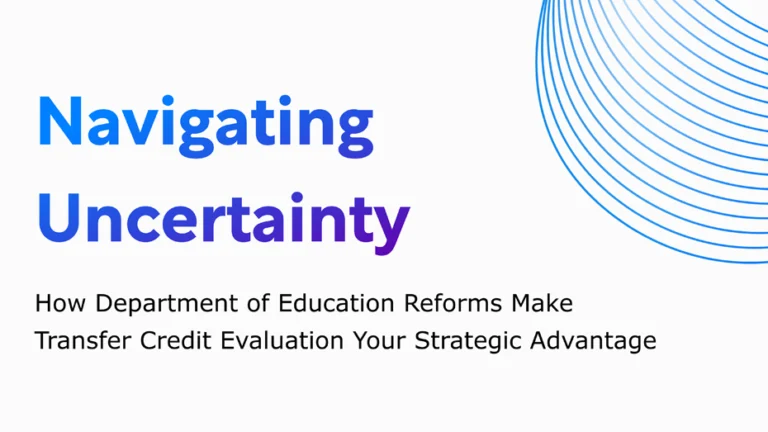Customer onboarding: is it always bound to have friction? Some organizations believe there’s no way around the abrasive parts — and both the company and its clients pay the cost. As a result, Thomson Reuters discovered 89% of clients endure such subpar onboarding that 13% leave for a competitor.
Commercial clients and your own teams deserve more from your onboarding, but it doesn’t have to stretch your thin resources even further. Inefficiency is the burden, and understanding what irks customers about your processes is the first step to gaining them back.
1. Too much information
Early onboarding is dense with high-friction information gathering, with employees requesting far too much information too fast. Naturally, customers become frustrated and nervous as they pass through meticulous identity, credit checks, and more.
Despite keeping a bank compliant and secure, these processes often lack the means to balance the customer experience with efficient information requests. Without a way to avoid overwhelming your customers, balancing the walk between compliance and customer satisfaction is an uphill struggle.
2. Redundant requests for info
As the client encounters each onboarding department, they become increasingly agitated as employees asking for info already obtained by the company. The problem? Departments involved in onboarding don’t often share their data with each other.
A bank’s data silos cause a customer to see requests for the same identifying and financial details. Unaware of why, they will encounter these requests from each department that has yet to identify and verify their information. Bureaucracy fatigue sets in as clients endure each department’s cycle of manual data intake, verifications, storage uploads, and follow-up analyses that feels like a carbon copy of the previous one.
Silos have helped to build each department’s internal processes, but progress now requires the walls to come down in favor of data that openly flows across the wider organization.
3. Using traditional or paper-heavy processes
Clients are further burdened by document handling that is rooted in manual and paper-based tasks. From compiling documents to account setup and beyond, customers and bank employees go back-and-forth to establish and maintain accurate bank records.
Manual intervention is an error-prone nightmare that leaves processing bottlenecked at a few human checkpoints. Without automated avenues to digitally submit, verify, correct, and share info across the wider banking system, many banks will lose customers along the way. Customer onboarding will continue to drag for up to 16 weeks at $20K to $30K for each client that chooses to tolerate this painful trial.
4. Department coordination chaos
Rarely has a customer ever enjoyed experiencing service delays due to collaboration issues within a business. Commercial banking is no different. Yet, these clients are often subjected to the pains of internal bureaucracy — including communication errors and flawed data.
Banks are often challenged with finding ways to bridge non-standardized systems and avoid redundancies. The customer comes to find that even as multiple teams connect with them, the teams are poorly connected with each other. The frustrated customer won’t — and shouldn’t — accept less than stellar care, leading them to naturally drop out for a competitor.
5. Credit decision response times
Customers also find that fragmented, manual due diligence and risk analysis results in painfully slow credit decision-making. Hand-extracting data from paper or email documents, to then arrange and dissect it, drags the release of credit and risk ratings. Rushing this laborious process introduces reliability risks that under no circumstances can a bank afford.
Long decision times from internal processing delays are further compounded by detours for corrections and confirmations from clients. Customers ultimately feel the weight of all this legwork and depart for greener pastures — typically ones that run leaner and more conveniently.
6. No access to customer support
Many banks put customers through these exhaustive layers of onboarding while failing to demonstrate an early show of good customer care.
Whether clients have questions about services or how to navigate all the paperwork, they seek live assistance that’s often absent or inconvenient. Customer support reps field hundreds or even thousands of carbon copy requests for simple actions, leaving less room for deeper issues.
Consider how hundreds of daily PIN changes and replacement card requests can become sludge in the phone lines, and it’s clear why support employees are less agile as a result. When customers aren’t getting their questions and concerns answered as a new client, there’s little faith that they’ll get assistance when critical issues arise with their accounts later.
Onboarding retention doesn’t eliminate the risk of support-related customer losses. The same support issues continue to affect customers through their entire lifecycle, leading companies to lose 50% of their clients within 5 years’ time.
What can automation do to mend faulty customer onboarding?
When efficiency slows your progress, automation is the panacea. Onboarding automation allows customers more avenues for self-service, as well as directly injecting data into robot-driven info verification and analysis. Better customer care is a gateway to better customer experiences — and loyalty.
Employees often see the most intense benefits of automation. Contrary to what some believe, this intelligent automation amplifies each employee’s value rather than replacing them. Organizations find automation releases teams from manual gridlock into high-value collaboration, analysis, and more powerful decision-making.
From chatbots to instant credit risk analysis, automate intelligently to cut out value-draining tasks and embrace the enhanced value of simpler, robust processes. When you’re ready to augment your onboarding process efforts with intelligent automation, ProcessMaker is here to help.





